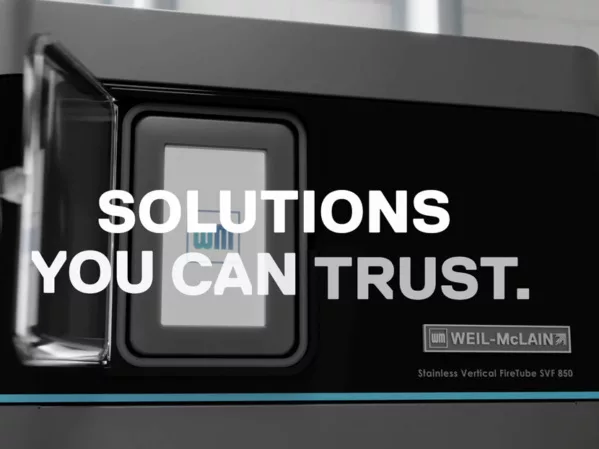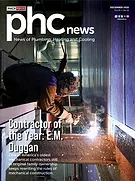There is a shortage everywhere for workers — pick an industry and everyone has the same issues. And the stigma our industry has placed on itself of not being “sexy” makes it difficult for those unfamiliar with it to consider it as a career path.
However, there is a solution.
What if I told you that Texas A&M University’s Masters of Industrial (MID) program has brought more talent into the PHCP pipeline over the past 20 years? Situated in College Station, Texas, the program has set a standard of developing leaders within distribution with its four-semester program.
The Wholesaler magazine is proud to shine the light on the program, its initiatives and success stories, with spotlights on each throughout the year. To get some insight, we sat down with Bharani Nagarathnam, PhD, director of the MID program and an associate professor in the Department of Engineering Technology and Industrial Distribution at Texas A&M. We discussed program highlights, why you should consider sending your team members through the program, and how your company can be part of the solution to bring our industry on the radar of those searching for a career path.
The Wholesaler: Can you start by giving us an overview of the Master of Industrial Distribution program — its purpose, focus areas and core curriculum?
Bharani Nagarathnam: The MID is the only graduate degree in the United States designed for industrial and construction distributors. The four-semester program is designed for working professionals, with all courses online and a flexible format. The professionals attend a four-day residency at Texas A&M University’s campus each August. The program is coming up on its 25th anniversary and has graduated many leaders in the distribution industry.
The curriculum is focused on developing the functional professionals or early career managers for mid-management and leadership roles. The content focuses on distribution sales and growth, customer experience, profitability, operational excellence, supplier management and talent development. Courses are co-taught by resident professors and industry executives. The MID program is designed to dramatically increase students’ ability to think globally, integrate trends and act strategically. The courses provide the cutting-edge and critical skills necessary to advance the business.
TW: Who is the ideal candidate for the MID program, and what kind of professionals typically enroll?
Nagarathnam: Ideal candidates are professionals from distribution and manufacturing backgrounds with at least five years of experience. Any job function is welcome. Currently, the average experience is 13 years, with professionals from early 30s to late 40s enrolled in the MID program. Companies typically support high performers with potential for management and leadership roles in the future.
The class sizes are designed to be small for effective engagement and learning, typically 30 to 40 professionals from various channels and job functions. There is a lot of learning and value in working in groups with professionals from a plumbing or HVAC distributor and a chemical or metals distributor on a case study, project or discussion board. Over the past few years, we have seen an increased number of female applicants and younger applicants.
TW: What are the key challenges in the industrial distribution field that the program aims to address?
Nagarathnam: Since the pandemic, customer expectations have increased and margins are being squeezed. In addition to mergers and acquisitions in the channel, distributors are challenged with sales and growth. To be successful, distributors must add value beyond the box. They should move from a product-and-price focus to a relationship-and-customer-experience focus. Distributors should become trusted advisors. To provide these services and customer experience and grow your business, you need a talented workforce.
Your people are your growth engine. The speed at which you can grow depends on your people. Your strategy is only a plan on paper; people are vital to executing those strategies and achieving growth. Developing managers and leaders with knowledge in distribution-specific growth strategies, value-added services, financial and people management skills are essential to your success. The MID program has successfully addressed these needs for almost 25 years.
TW: How does the MID program equip participants with the skills and knowledge to overcome these challenges and succeed in their careers?
Nagarathnam: Most distribution professionals didn’t aspire to be in distribution sales or operations when they were in high school or even college. Most may have accidentally started (or fallen) into the distribution field. We have all heard about the branch manager who began as a driver or a warehouse associate. Most may have learned sales, service and operation on the job by shadowing someone or through trial and error.
The curious, hard-working and aspiring employees raise up though the ranks to become managers. Once you become a manager, the skills needed to be successful, such as implementing the company strategy, driving margin, controlling cost, hiring and managing employees, are not usually something you learn on the job.
For example, companies don’t have the luxury of allowing managers and leaders to learn profit and loss on the job. Programs like MID help develop managers and leaders and equip them with skills to lead and grow distribution companies and adapt to the rapid pace of change in the economy.
TW: Could you share a success story or example of how the program has positively impacted a graduate’s career or the organization they work for?
Nagarathnam: We are proud of our graduates. Many of them have advanced in their careers to become leaders in their companies and industries. Success comes through two areas. The first are the strategies, methods and tools our graduates take to implement in their companies and demonstrate their skills to positively bring business impact. The second way is through their second-year capstone project. Many have implemented their projects and realized benefits to their companies, either reducing expenses or assets or increasing sales.
A 2022 survey of our graduates indicated that 81% of them received a promotion while in the program or within three years of graduation. Additionally, 50% of our graduates indicated receiving a 20% or more pay increase, and 46% are in middle management or leadership positions.
TW: Why is it important for professionals in the PHCP industry to consider this program, and how does it contribute to the overall health of the distribution channel?
Nagarathnam: For most distributors, the employees who got you here may not have the talent to get you to the next level. You need top talent to succeed in distribution. If you don’t have a quarterback, you don’t have a team. The future of distribution is digital-first, value-added services, service-oriented and customer-centric.
Distributors of all sizes need to realize that the speed at which they can adapt, grow and sometimes survive is dependent on their people. Developing your few high-potential employees with knowledge, skills and experiences will help your company succeed today and develop the succession plan for tomorrow.
TW: Where should folks go for more information?
Nagarathnam: Learn more about the Master of Industrial Distribution program at http://mid.tamu.edu. Connect with Steven J. Ebel, associate director of recruiting for MID at Texas A&M University. He can be reached at office: 979-458-3145, mobile: 936-297-1665 or [email protected].






